Interview: Rabea Massaad on his versatile signature Neural DSP plugin and how its trailblazing synth technology opens up new possibilities for the guitar – including his solo album
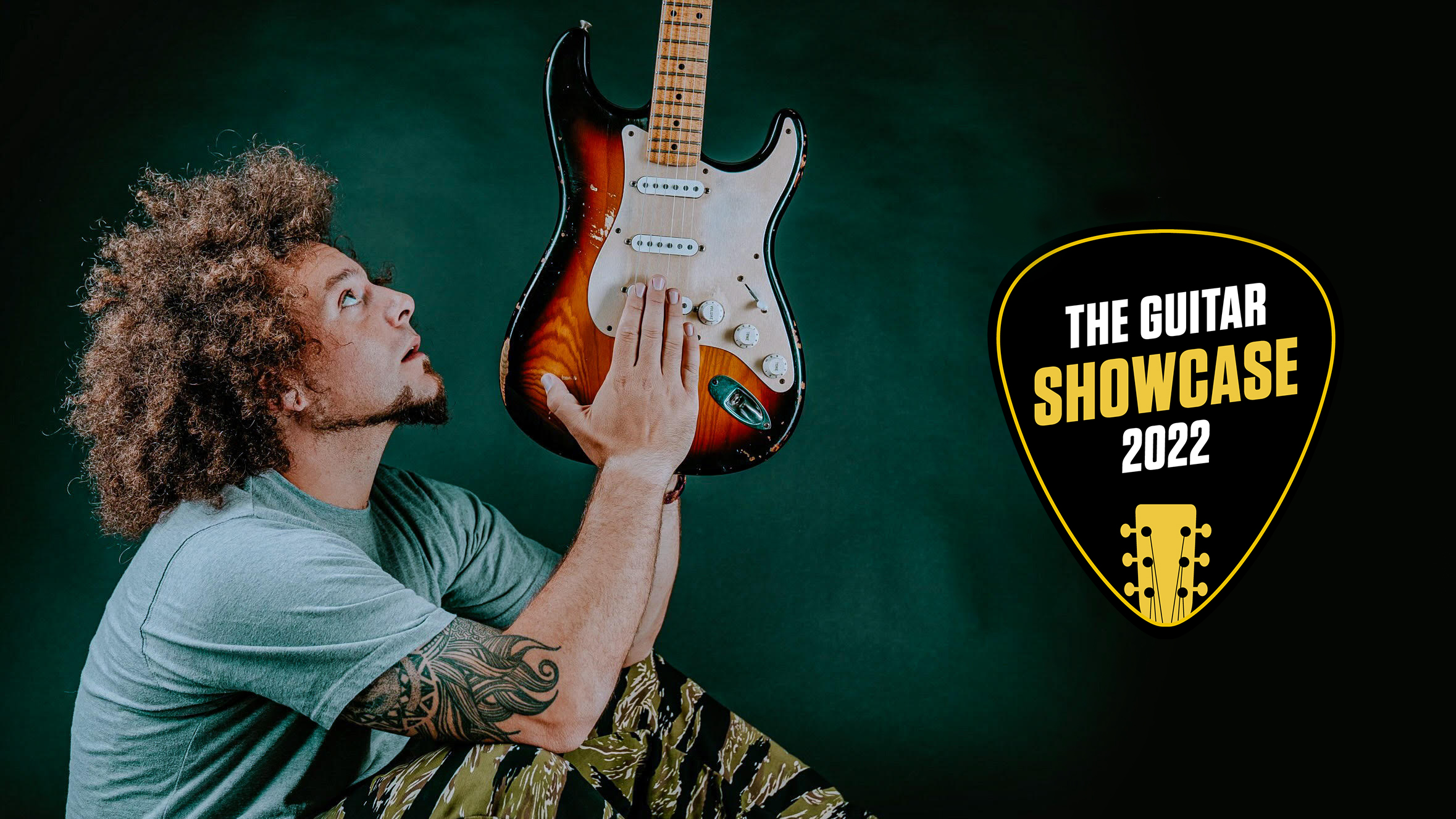
GUITAR SHOWCASE 2022: Part of what makes Rabea Massaad such an interesting musician is that he's hard to pin down; his playing reflects the technical influences of players including Nuno Bettencourt, but he's equally at home in the modern progressive worlds of Tool and Karnivool with some John Mayer-esque blues chops thrown in for good measure.
In short, Rabea is incredibly versatile and that mindset expands to his gear; a love of valve amps combined with a much more recent openness to digital modelling processors for the stages he finds himself on around the world for fly-in gigs. No wonder his new signature Neural DSP Archetype plugin has so much scope.
"I would definitely say versatility was a key feature for me, as a result of years of demoing, and playing in different bands, and trying out all sorts of gear over the years," Rabea tells us of his signature plugin with the Finland-based modelling gurus.
"I love playing Strats, and then I love playing the heavier stuff. So it has do all of that stuff. Because at the end of the day even if I stopped doing YouTube videos today, with all the gear, even my studio, I could have a choice of so many nice amps to just sit and play. The plugin really did have to excel at that versatility, as well as other areas like creativity with the synth elements."
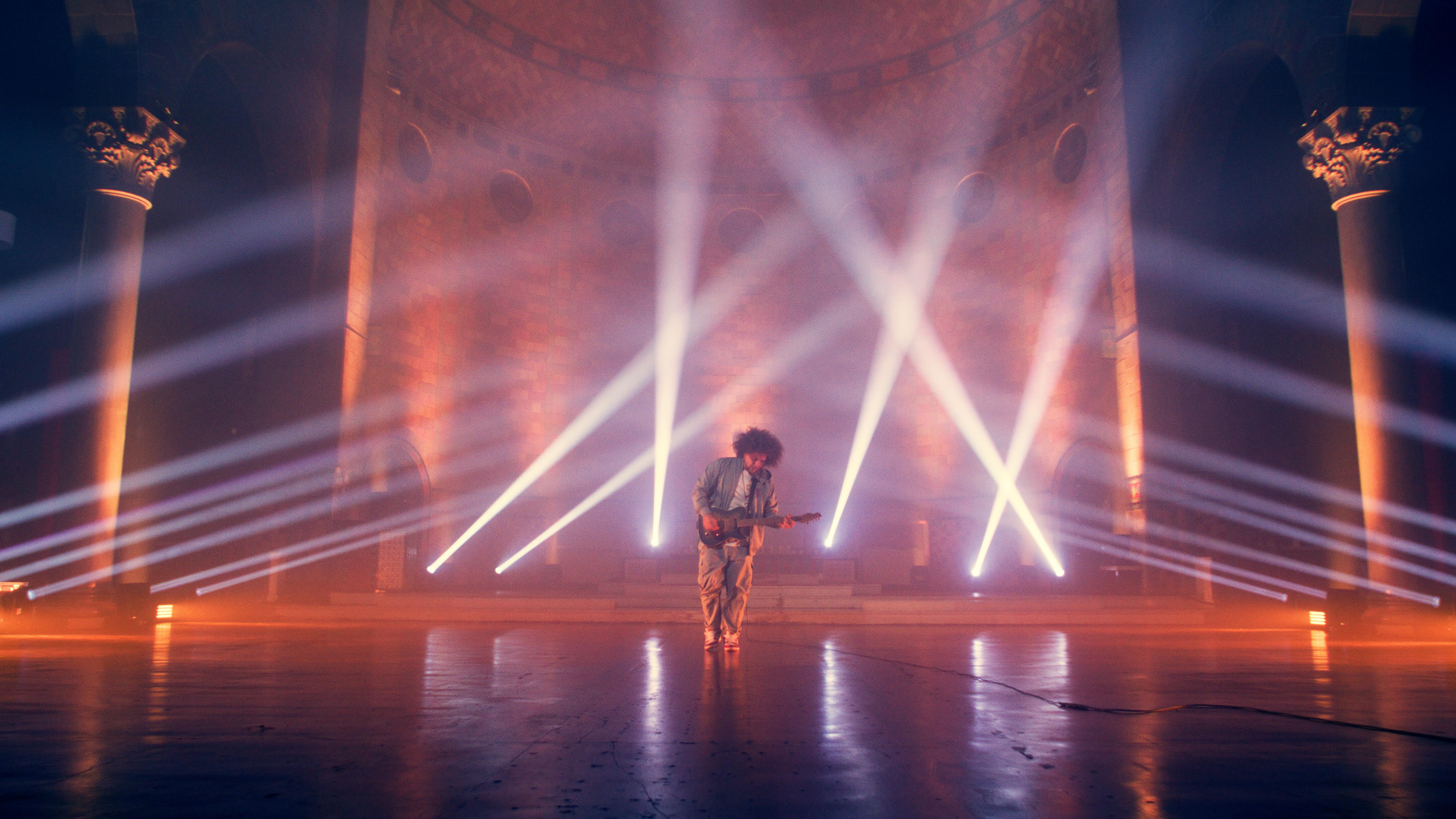
The openness of Rabea's playing to influences is an important influence on Archetype: Rabea because despite his obvious metal chops showcased in projects like metal cover version project Frog Leap's live shows, Rabea doesn't see himself as the kind of player some might see him as. "I wouldn't necessarily consider myself a modern djent progressive metal guy," he explains. "I like some of it but I just I can't keep up with the riffs. There's too many riffs! It's too intense.
"I prefer my old school approach with gear too," he adds. "I don't really have a lot of experience with modellers generally – I've always used amps. The the most modern thing for me was going from amp to to load box for years – using IRs after the fact. But then when the [Neural] Quad Cortex came out [that changed]. The Quad Cortex was my first real outing with a modeller.
"It's all kind of new grounds over the last few years for me. I think you can get pretty much anything out of it. I think that launch track I wrote was a good example of that – trying to get everything from pushed, bluesy Strat tone through to this disgusting, grimace-inducing fuzzy heaviness, you know. I think we nailed the versatility."
Get the MusicRadar Newsletter
Want all the hottest music and gear news, reviews, deals, features and more, direct to your inbox? Sign up here.
Do you think that modelling has reached a significant turning point with amp tones especially?
"There are people that are always going to love amps and dialling in amps. And I think that for me the biggest selling point of the more modern approach with modellers or plugins – whatever is from that side – is the workflow. Especially with the plugins.
"A great example is the plugins because you're working with DI really. So once you've written your riff and stuff, you don't have to keep that sound. You can keep the DI track performance and put on any plugin you want to get a different tone. Which you can't do traditionally. I'd have to remember or write down the settings on my amp if I had to shoot a video, and then come back to the track I was writing the following day. Which was a pain is the ass and it might sound a bit different. Whereas now, you just load up the preset you saved from last session and sound exactly the same.
"So that, for me, is the one of the strongest selling points of the modern guitar world. I think I'm that kind of annoying person in the middle where I'm like, I love the modern feature set but I still want it to feel, sound and give me the vibe of an amp.
"I've spoken to a few people that have only ever really learned guitar with modellers. I'll ask, 'When was the last time you played for an amp?' They started on a modeller and never really use amps. They feel weird to them. In my head I can't comprehend it! I'm not criticising it in any way. Everyone learns the way they learn. But yes, we are living in a new age. And some people are picking up the guitar, learning and getting to where they need to get to with modellers alone."
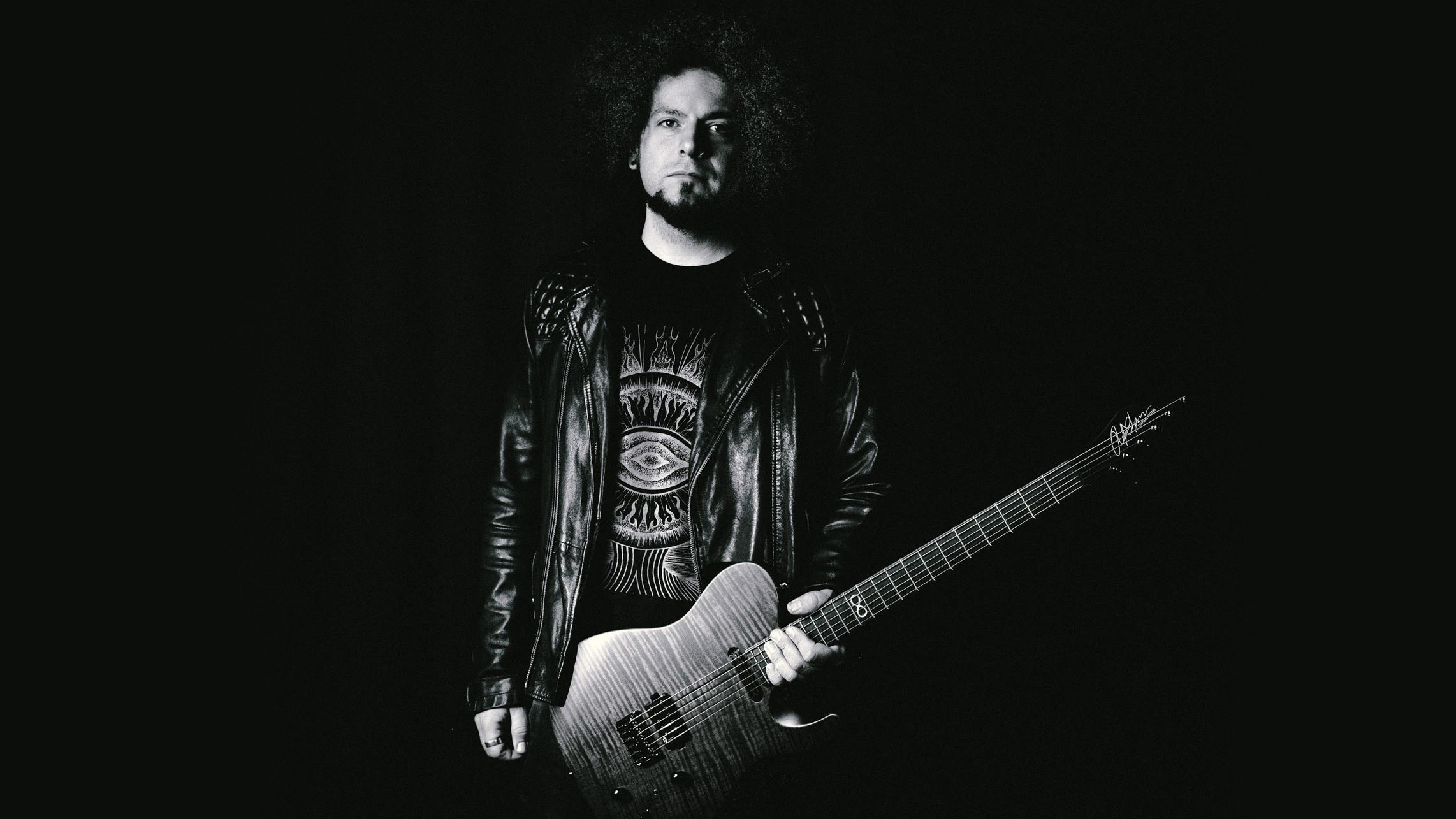
You can build this virtual amp however you like, from whatever you want from what you have been inspired by
You're the latest in a number of artists to work with Neural DSP on a signature Archetype plugin with virtual amps and pedals included, but how does the process of design begin and develop?
"Neural approached me to do the plugin, which was awesome. And then from that point, you're like, shit… everything's been done! So many things have been done already in the catalogue of plugins. But I had those specific requirements, like fuzz, and then very specific on the delay and the reverb patches… I wanted rooms on the cabs. There was a few things like that, that absolutely had to be in there. And then the synth evolved from an initial idea.
"But the process is you have to decide on the sort of devices you want to be inspired by. I absolutely love my Victory Kraken lunchbox heads, and I obviously use the Super Krakens a lot. But the one I'd used most with Toska and the other bands I've done was the 50-watt lunchbox Kraken from Victory that I was involved with the design of. I'm used to those amps now that they had to be heavily inspiring the tone of the plugins.
"So how it works is you do a bunch of readings on the devices that you like and then it gets converted into the digital world. I have no idea how they do that but it ends up being like a digital version. And then you can kind of tweak from there. So you can kind of be like, 'Well, I've always wanted this to be a little bit different and maybe I wanted a presence knob in there. Maybe I would like a bright switch too.' So you can build this virtual amp however you like, from whatever you want from what you have been inspired by.
"That was really, really neat; to suggest having a Presence or this Tight knob and just change the gain structure a tiny bit. And then just an hour later they'll say, 'Try this' and you're thinking, 'Oh, holy shit! It has all this cool stuff in it now.'"
"That process is kind of how Neural do it for everything. I referenced a bunch of pedals and with the fuzz I wanted the vintage side to be like a proper Fuzz Bender-style fuzz. And for the modern side one of my favourite pedals I use all the time is probably the Thunder Claw like by Mr. Black. It's just this awesome-gnarly sounding fuzz.
"So you take all these measurements and you adapt it. For example, we added a bass control to the fuzz that isn't there on the real thing, and we added a bass control to the Tube Screamer-style pedal. You can just just tweak away until it's how you like it.
"On the Tight knob on the high gain amp, where that affects the circuit digitally is apparently really difficult if not impossible in the analogue domain. It's like a low shelf so it's cutting bass, and it's placed at 12 o'clock on the amp, say around 900 hertz – I'm getting a bit geeky now. As you turn it down, that shelf moves back. So it actually lets more low end, I think it's in the preamp stage. So it affects the fundamental feel of the amp. At 12 o'clock it feels natural, like the Kraken does. And as you pull it back, it goes all flubby – almost like a Mesa or something really loose. I'm getting way more out of this amp than I could in real life. And that particular feature isn't technically possible, apparently, in the world of amps.
"Neural has a huge team for different areas. There's a reverb guy, a delay guy… all these different people there. I was lucky enough to actually fly out to Finland and stay there for a week to really make headway on the plugin development. So you have people coming in saying, 'Check this reverb out – how do you find this?' You have a play and make suggestions. Like, 'It would be nice it had a little bit more density overall', then they'll disappear and come back a bit later. And it's crazy – all these individual little pockets people that do all this stuff that then it gets put into one package."
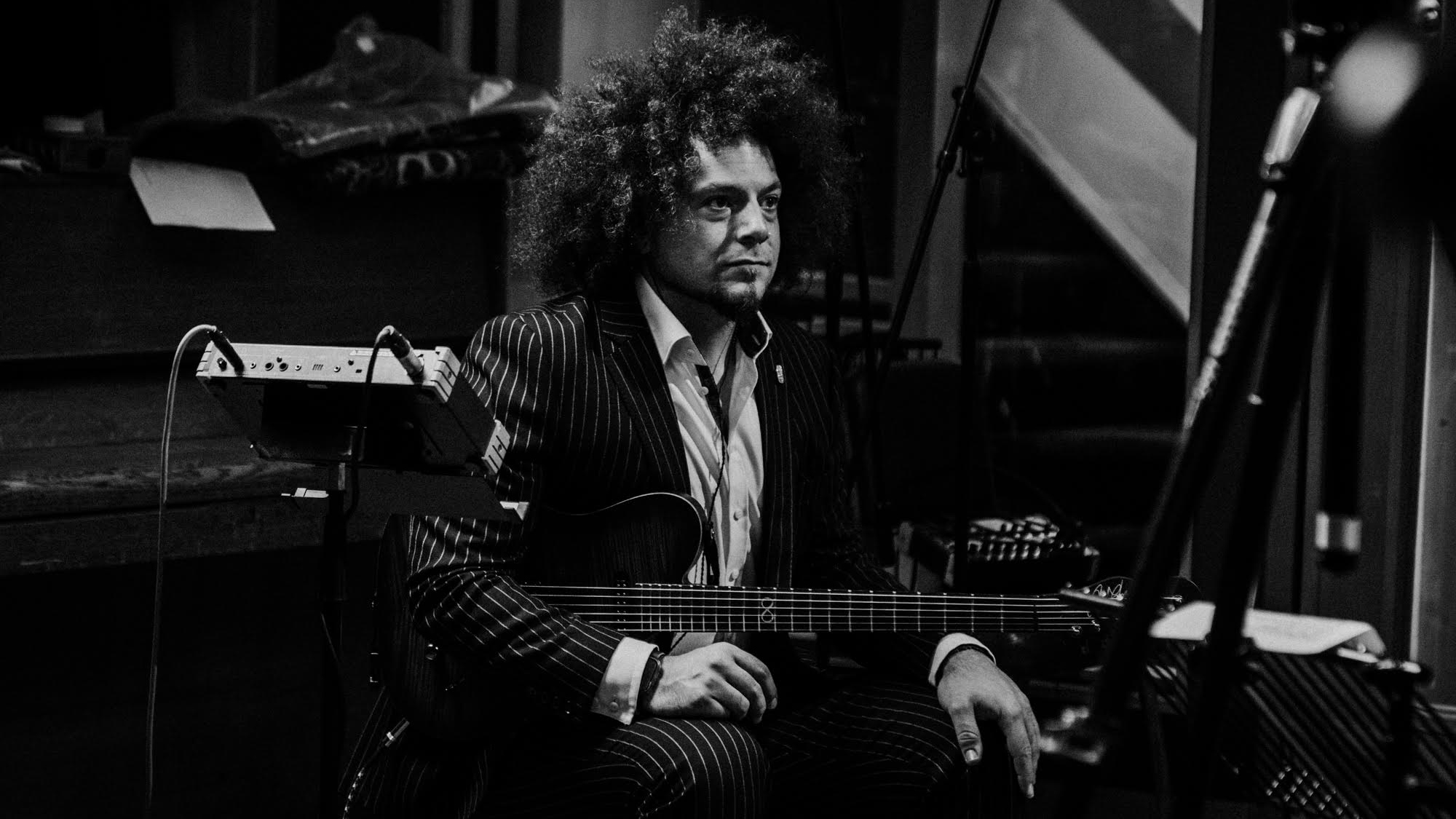
Do you think Neural's approach is a different to others in some ways?
"You can call it bias or whatever because obviously I've just done this plugin, but having been there, there are so many good points to say about them and how they do things. The first thing is when you go into the office, it feels really modern and progressive; the whole environment.
"I remember watching this documentary about where people work at Google. And it seemed really fun with this big area where you can just help yourself to nice food and snacks. But it's on you to work and make sure you deliver. It feels like that; I liked that and no one seemed unhappy. No one seemed stressed. And everybody's so painfully young, and so painfully intelligent! I feel so dumb stood around there. I met the guy who designed the capture process for the QC– the guy's like 24 or something! And they're all so nice and so modest about how incredibly smart they are and what they've achieved in this team.
"So just based on that, they're doing it right these guys. I think personally that they're at the forefront, and they've got the right idea. The way they market their products is great. The way they look is great. They've got a great artist team. So yes, hands down for me, they're probably one of the best to do it."
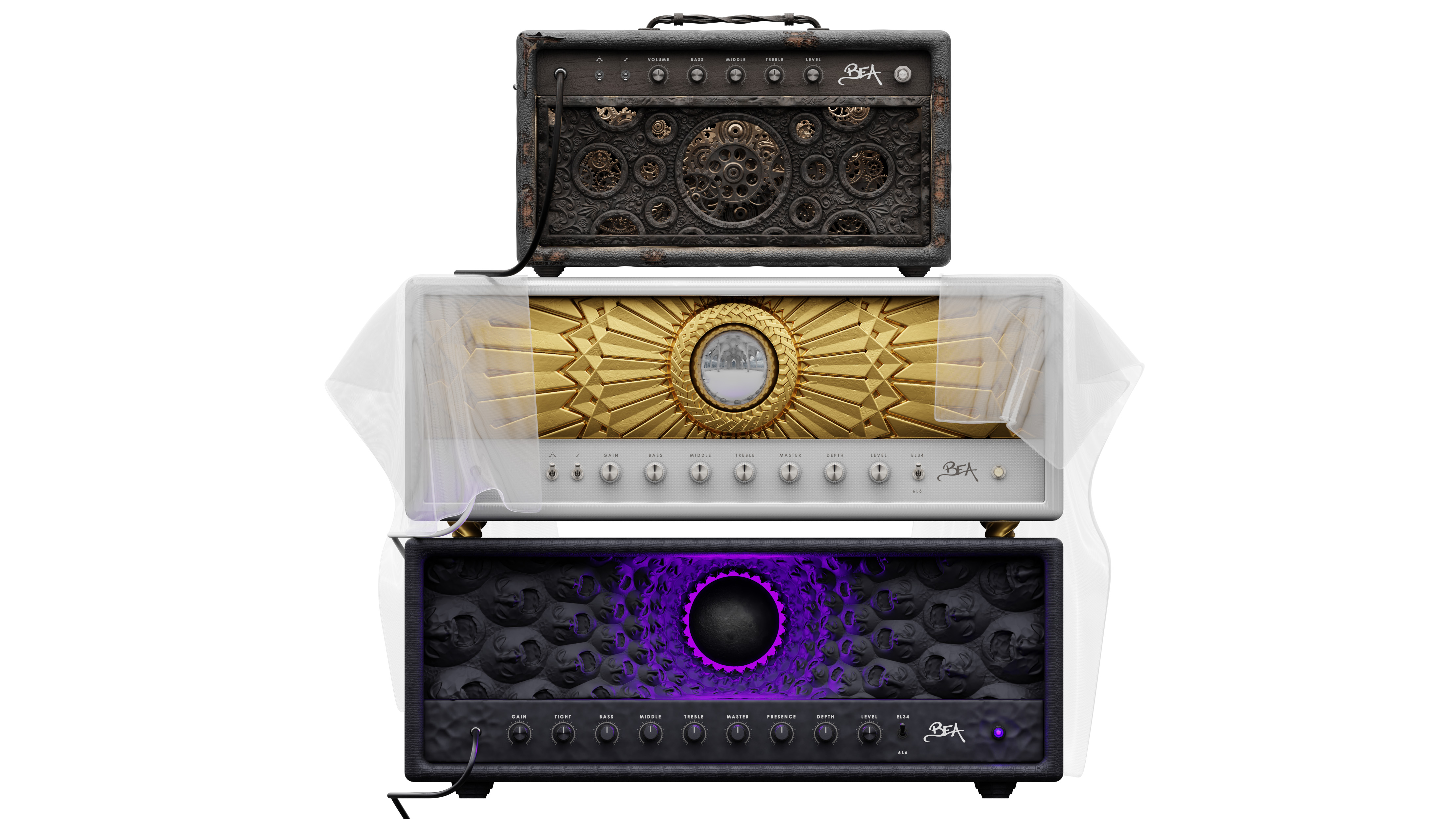
The idea is to give more flexibility by hitting a switch rather than having to mess around with the knobs so much
In your work demoing gear on YouTube it must have been advantageous for this plugin with how much experience you've had trying different amps and pedals?
"Just generally that was one of the things I felt fortunate in. Over the last 10 years of of demoing gear you do find your personal preferences. And you can draw parallels to a lot of gear that has been released over the years and what is being referenced. Then I can distil down all my favourite things that I've stumbled across or used.
I would say that the plugin is more heavily referencing the bands and the styles of music in the original music I've been involved in. And then there's like a small handful of my favourite things that I've like demoed and ended up using over the years. Things like the twin blade compressor being sort of inspired by the stacked compressor, the Cali76 Stacked Edition Origin thing. I didn't realise I'd be so into a stacked compressor like that but it's so cool how it works. So that had to go in there.
"Stumbling across pedals that condition your guitar signal as well. There's 29 pedals and they're just nice utilities, depending on the kind of tone you're trying to achieve. The idea, and with the amps too, is to give more flexibility by hitting a switch rather than having to mess around with the knobs so much."
Every element of this plugin is a new algorithm – none of the devices have been used before
The freeze function on the reverb looks like it could be a great creative tool for players to jam with.
"The whole USP for me with the plugin is that it's a space for creativity more than anything else. For me that's priority number one. Every element of it felt like had to be that you could jam out and find something fun in. So the reverb is a great example because of the freeze that was inspired by when I'd use the NightSky from Strymon. I really, really enjoyed how you could freeze with that, move the pitch around and jam with it like it was an instrument in itself, and just this one pedal. I just love that. And that's what I wanted the reverb pedal in the plugin to do; you don't even need to use any of the other parts of the plugin, you can just sit with the reverb, hit the freeze and just jam out for hours.
"So the idea of freezing the reverb and being able to control the pitch was a really nice thing because it creates its own instrument vibe as a pedal. And it was really fun to work with Neural on. The reverb guy Rossi [João Rossi Filho] is such a legend. He was trying to work out how to get the freeze to sound nice, because it's like a micro loop in the way a freeze works. But it evolved in that we didn't want to sound like it repeats. He looked at feeding it back into the reverb so it just sounds nice and bedded in. It has a crossfade effect so it doesn't sound all digital when you change the pitch. Apparently that was incredibly difficult to do.
"I didn't know that. I was just like, 'Can we do this?' And every time he'd bring it back in and like I'm like, 'Ah, but can we just make it like this…' He'd say, 'It's gonna be really difficult, but I'll I'll do it.' And every element of this plugin is a new algorithm – none of the devices have been used before. The fuzzes, the overdrives… everything is brand new algorithms – the reverbs, the delays, amps and cabs. Everything."
That's a lot of work. The price is reasonable when you consider the hours of work going into it.
"That was another question – the price. For example, the vintage and the modern mode on the pedals loads up a completely different pedal. So it's not just the change in the EQ or the response. When you switch to vintage on the fuzz it's like a Tone Bender vibe. Then flick it to modern and it loads up a new pedal. So with the overdrive there's two, phaser there's two, octaver is two – so that's six pedals already. And then you get the compressor, reverb and delay. It's nine pedals in the plugin but there's more, and that's something that is easy to overlook.
"Then there's the synth. And €139 is around the price of a half decent overdrive pedal or whatever. We all have them sat on our shelves, ones we bought and thought we'd really like."
That's an impulse purchase pedal price.
"Exactly, and I've seen like the opinions on the price-point for all the plugins over the years. The ones that are more expensive and less expensive and different people's opinions are really interesting. Because you do have to kind of take a step back and think, but it's like a good Tube Screamer's price, and you get all this stuff."
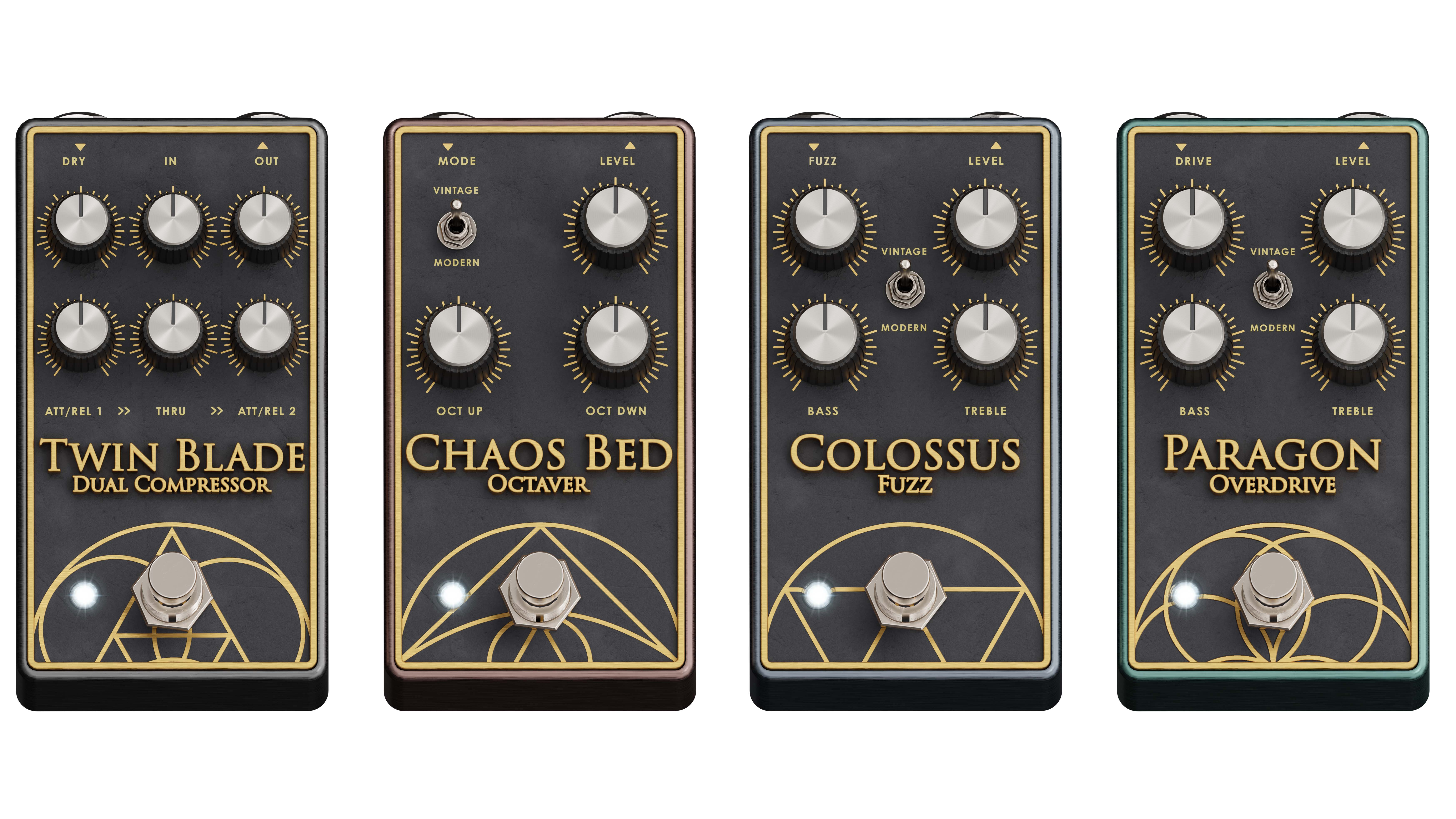
And it's also important to say, this isn't a 'metal guitar' plugin either.
"I think it's important for me to say that if you want djent, don't buy the plugin. A lot of people for some reason feel I'm like a metal djenty guy – I don't know why but it very much isn't aimed at that.
"It's a full array of everything from the chill to the extreme. And it really is made mainly as a creative space. I saw a few comments where people were expecting it to be like the Gojira plugin and be really tight and metal and they were kind of disappointed that it didn't achieve that but it was never aimed at that.
"I mean it does heavy and I saw a guy get a good djent tone out of it but it would be wrong to buy it assuming that's what you'll get from it. It's really a tone tweakers plugin. It couldn't be more gear demo guy tweaking if it tried, coated in Dark Souls-inspired graphics."
A headline feature of this plugin is the Overlord Synth, and guitar players are sometimes thrown by the concept of a synth pedal. This looks like a really good way of a guitarist to get into that world because it's a really different approach, right?
"I would say that in a nutshell it's not necessarily there to be like a synth – like a key synth. Some people think synth and they immediately think of Snarky Puppy and synth solos in fusion. Yes, it will do that and it'll sound that way. But for me it started as more of a utility.
"I use a [Moog] Subsequent 37, and every time I'll write a tune or write a riff, I have to learn it on the synth and then play it in and it takes me forever because I'm shit at keys. But the results are always immense because in your mix, everything sounds super supported and big. It's great for textures. So I just see an infinite use for that.
"I tried to do something similar on my pedalboard with the Keeley Synth-1 pedal, because it kind of emulates a Moog sound – that kind of laddered filtered tone. But at the end of the day it's manipulating a guitar signal and trying to make it sound like a synth, so it was a bit unpredictable with its tracking and made a lot of weird glitchy pop sounds. But it's great for textures, right? So that was the energy original remit for the for the synth for the plugin. But Pancho [Francisco Cresp, Co-Founder and CPO at Neural DSP] said, "Nah, we'll do a real synth'. Ok, if you want!
"He tried the pedal – we sent it over for him to analyse and take a look at and he just thought that to try and recreate that and then market it as synth, it might be misleading. Whereas they could make an actual synth, if the team could work out how to convert a guitar DI signal into a real oscillator – which is the magic in the plugin.
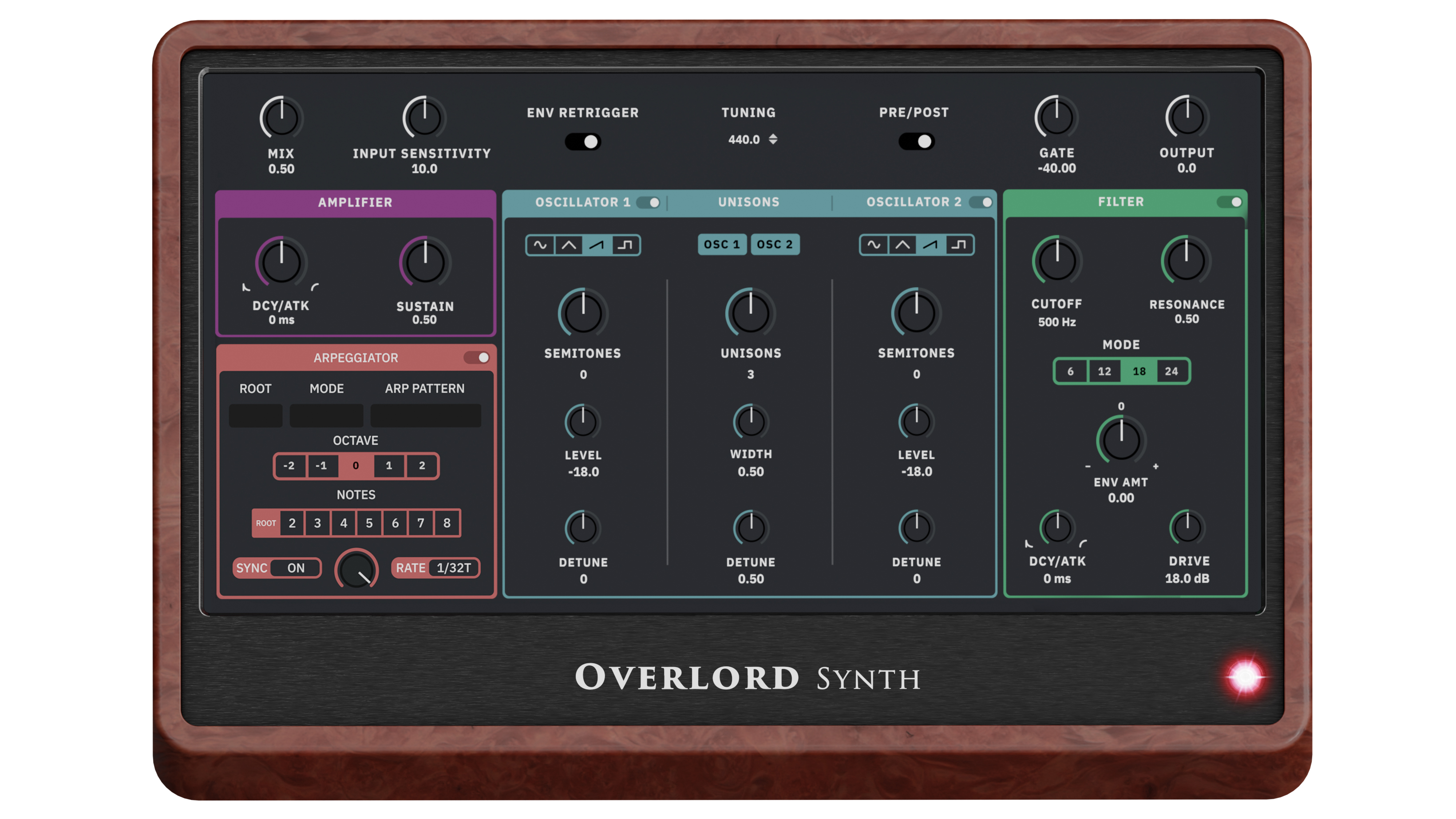
It's genuinely like a synthesiser; there's no effect laid over your guitar
"It basically acts like a tuner, so it reads your pitch. Then it takes that pitch and triggers the ADSR of the synth and then the oscillators. So it's genuinely like a synthesiser; there's no effect laid over your guitar. The guitar serves in the exact same way as the keyboard on the synth. So when you press those keys, what's happening is it's triggering an oscillator. When you play G on your guitar, it's gonna trigger an oscillator in G.
"So that's the real breakthrough that they worked out. Because the DI guitar signal is a quick transient, and then it drops off, right? It's really spiky and horrible. So there's such a small amount of pitched information for them to then grasp hold on to and create things like sustain for the synth, to get everything right so it tracks and picks up the nuances in your playing. I can play lead just how I always play lead – I don't have to change the way I play to use it. So that was a nice thing. And I think that that then opens up new possibilities for the world of synths and phrasing because when I hear it I don't even know if it's a guitar or a keyboard. It just sounds like a synth, but the phrasing can change now. The way guitarists phrase, you can't do stuff like that with a keyboard.
"I think it's just really exciting and it's kind of a new avenue. And I know there's been pedals out there, like Boss with the SY-1 and the SY-200. They all do really cool stuff but what I love about the plugin on the Overload Synth is it's just stripped back. In the world of synth it's kind of fairly basic, but for its purpose inside the plugin, there's just enough there so you can really use it and create great layers and arpeggios.
"It's got the pre and post switch, which for me is a huge deal; being able to send it back through my amps. Routing it back through all the overdrives and pedals and reverbs and stuff to create just mental textures. Again, it just promotes the idea of plugin as a creative space. I've seen people sort of say, 'I'd never use a synth'. But how do you know? if you've written a tune, and it's missing some secret sauce, you might find that background synth arpeggios and some reverb floating in the background just lifts the whole tune.
"It's like the Tim Henson plugin, that's like a songwriting tool, as much as it's got tones. Tim is a producer and a songwriter and it serves that purpose for him. And that was exactly what I wanted this to do for me. And I love writing tunes. And I love mixing music and creating these big soundscapes and I want the plugin to do that. It's all in-house."
The Archetype series is also a great advert for Neural's hardware with the Quad Cortex in terms of showcasing the kind of tonal quality the company can create. There's the whole profiling side of the Quad too – do you profile your own tube amps on it to use live?
"Yes, when I when I played the Stormzy set [at Reading Festival in 2021] that was using profile of my Soldano and my Victory VX100 [Super Kraken] in stereo. Because it feels the same. I did a bunch of tests when it came out just to be like absolutely certain that it was getting me the same results as the amp load box rig I have here in my home studio. And I was convinced at that point.
"When we do the Frog Leap stuff now, I don't have to use the Line 6 Variax rig, which I'm so happy about because I love that it can do all that stuff but there was latency with the Variax. So you're trying to play shred lead and it's like a tiny bit out and you're just like, Am I just shit at playing guitar? I couldn't work it out. So now with the with the Quad Cortex I can use the pitch shifter and use any guitar now."
The thing that I think is most important about demoing is contextualising the gea
There's the whole demoing side of what you do as a musician. And obviously there's a lot of established guitar YouTubers now making a living demoing gear to various degrees, but it's not an easy thing to be successful at. And there's these involved demo tracks people like you and Pete Thorne make to showcase products too. Do you have any tips for people that want to start or improve in that part of the industry?
"It's quite poignant at this moment, because for me, I'm actually like at the back end of that game. I'm kind of done with it. I had a great time doing it but for me personally, I just want to focus on music now. And I'm kind of respectfully sort of bowing out of the demo world a little bit. I'll still work with brands that I've been really close friends with, of course, and have worked with all the time like Victory, Origin, Strymon and people like that. But generally speaking, I'm kind of done with it.
"But I think to be successful in it, in my experience, the thing that I think is most important about demoing is contextualising the gear. So whenever I'm trying a pedal, whatever the pedal or amp, I'll be playing riffs; I'll be referencing songs or just jamming with it. Because a person who is going to buy it is usually going to be in a band or want to be writing or creating with it. So if you're just going through the motions, changing the gain then playing a quick lick, it doesn't give anybody any inspiration to want to incorporate that into their sound.
"I was really keen on putting it into musical context. So when I'm demonstrating a tone I'm jamming out some riffs, or playing layers or lead lines and stuff. I think as well, it's really important to make sure the audio that you're recording is true to what it is like. Aside from carving out some stupid low end that's just going to make some speakers like fart or whatever, I don't really do anything to the tone at all. The audio you usually hear is just what's been spat out of Logic. I think that's really important.
"I also think generally nowadays, the quality benchmark is way higher. If I look back on my first demos they're so cringe because A) I'm really awkward, and B) the filming and editing is not great. I think you've got to find a visual style and stick with it. And that can be as basic or as complex as you want.
"The Drummer Aric Improta, for example, who I follow on Instagram, most of his videos are just black and white with a GoPro. But he claimed it as his niche and now it works perfectly for him. So however you choose to present yourself, think about it, and just stick to that and evolve it slowly over time, rather than changing to see what works, because then it doesn't look like you know what you're doing.
"The demo songwriting side of it is just really when it's something that I need to contextualise this or I'm so inspired by it that I'm going to write a tune. If I think the best way of me demonstrating this is just to play a tune. Just to write a song.
"It's definitely difficult. And so many people are trying to do it now. The two big things for me and for people watching is that you're entertained, and you're informed. Those two things. So if the entertainment comes from your playing or the riffs you write or even the faces you pull, cool. And as long as the information you're putting across helps the person understand if they want to buy it or not, that's also really cool."
And it's important to spend some time getting to know the gear yourself before you try and explain it to viewers.
"I personally don't think there's any point in trying to get your video out first, I think that whole thing is stupid. Just take your time. People are only going to watch it if they're interested in watching the gear, right? If they want to know about the gear or go searching they might find your video, it makes no difference if you put it out at one minute past midnight.
"Generally, what I'll do is I'll get a product, have a look at the controls, kind of get my head around what that it might be. If it's already been out a while I might look it up online, see the if there's a sheet on the company's website, and have a quick look at the feature set. And then most importantly, I plug it in, and hear for myself. But I don't spend tonnes of time on that before shooting a video. Just enough so that I can say, 'This does this'. But the discovery bit is is genuine. I'm curious to see how it reacts with the amps. That's usually when I get carried away and riff out."
It's interesting actually hearing the two of us on a song. Because there are kind of similar sounds, and I'd never really considered that before
You filmed something musical with Plini when you were in Finland earlier this year, can you reveal any more about that?
"I don't know when it's due to come out but in a nutshell, Dan Davies [CMO of Neural] asked if we fancied writing a track together seeing as we were both in Finland at the same time. Plini was up for it too. I had an old demo and he was doing a bunch of shows so didn't have the time to to get home and write something quick. I had a handful of ideas that I'd started and not really progressed, and I found one that I thought fit. I sent it over and he was getting into it.
"So then we just finished it off together in Finland, and shot the video. We were learning how to mime the parts as they were setting up the cameras, and it was funny because there's so many moments where we were glad that it's a wide shot where you can't exactly see the frets and playing! We didn't have the time with everything else happening to know that song off by heart. But it was great fun. And I think the tune is fun. It's interesting actually hearing the two of us on a song. Because there are kind of similar sounds, and I'd never really considered that before but it's nice. And it we fit together on the song, which I think is really cool."
We've got a new band in the works
You're still playing shows as part of Frog Leap's live lineup, but what else is next for you musically with original music?
"I would say it's a bit of a transitionary period for me in the sense of, like I mentioned earlier, stepping back from demoing a bit now. Basically, using my channel more as a vehicle to share my music ideas and tone searching. So if you do see a pedal demo, it won't be a demo it will be just be jamming with a piece of gear that I've got. Same thing, but just no waffle and talking about its presets and parameters. You know, someone else can do that.
"We've got a new band in the works. I did a project with Liam Kearley from Black Peaks called The Totemist last year and that's kind of evolved a bit now. So it's me and Liam, and then a chap called Jay Crawford who plays bass with Press To Meco. He's playing bass and vocals and Joe Gosney from Black Peaks is on guitar as well."
Now I have this like creative thing that I can put on my laptop and run around the world with, I'm just going to be writing a solo record
So unlike Toska and The Totemist this will have vocals?
"Put it this way, I never really fully wanted to ever do instrumental music, we just couldn't find a bloody singer! There was that thing that you have to keep the music interesting if there's no vocalist to keep your attention. So that's how that happened. But I've always loved bands and hooks and riffs – these big anthemic moments you can lose yourself in when you're watching live. So yeah, with this band we've written maybe best part of 20 songs and we're trying to like filter down to a common musical theme. But it's a little bit like pebbledash and one song is really Toska and one song sounds hugely Black Peaks, and then there's a bunch in the middle. So we're working that out, which is cool. Taking our time.
"For me personally, post-plugin, now I have this like creative thing that I can put on my laptop and run around the world with, I'm just going to be writing a solo record. The track I wrote for this [plugin] launch was kind of like the final track for the Grinding Gears EPs that I've done over the years. They're just collections of these demo songs you mentioned for gear. And I've always seen them that way. They're just demos – just quick, couple of minute-long tracks, but people have really enjoyed listening to them. But I've always personally felt, I want to give you a real record. You know these are like demos that I've done in a day and it's not the real me, man! [laughs]. That's kind of how I feel about it."
"So I just want to pursue that and to be perfectly honest, being in Finland with Plini and getting chance to just hang out and over a beer and just talk about that, because I've always been intimidated by virtuosic guitar music, if that's the word, where there's lead, and that's the predominant feature. It's always scared me off. I love Nuno because he'd put a lead in in the middle of a song. He's got a guitar solo in a song, you know, so there's less pressure. But after speaking to Plini, I felt really like inspired and kind of energised about really taking that seriously. I reckon over the next year I'm going to be trying to release an album of my own."
- For more on Archetype: Rabea visit Neural DSP

Rob is the Reviews Editor for GuitarWorld.com and MusicRadar guitars, so spends most of his waking hours (and beyond) thinking about and trying the latest gear while making sure our reviews team is giving you thorough and honest tests of it. He's worked for guitar mags and sites as a writer and editor for nearly 20 years but still winces at the thought of restringing anything with a Floyd Rose.









